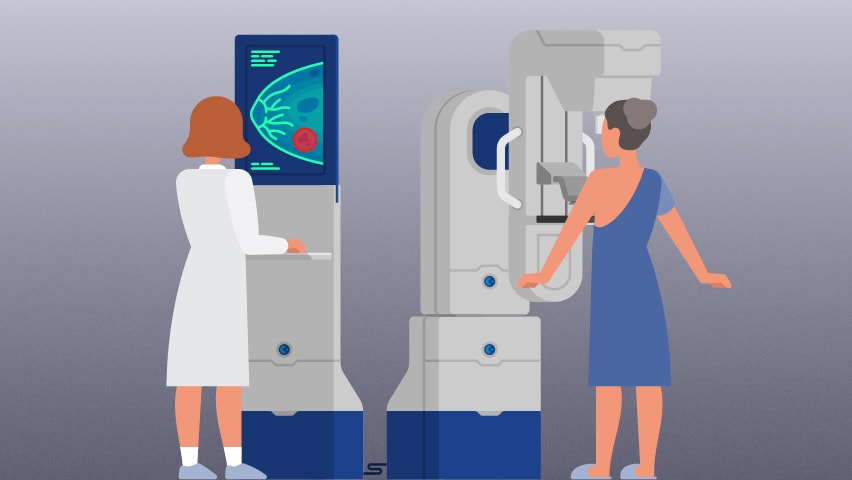“I don’t have a lump, so there’s no way I can have breast cancer.” This statement reflects a misconception, unfortunately. While a lump is the most common tell-tale symptom of breast cancer, the absence of a lump doesn’t mean that breast cancer can’t be present. There are other methods to detect breast cancer, aside from feeling a lump, and screening is the key.
Advances in mammography and ultrasound, are allowing radiologists to detect a larger number of non-palpable masses in the breast. Non-palpable means the mass cannot be felt. With cancer, non-palpable growths are too small to be felt, but they can be detected on ultrasound, mammography or an MRI. Non-palpable masses may be cancerous or benign. A tissue sampling, called a core needle biopsy, will be necessary to rule out cancerous cells.
Like non-palpable masses, calcifications, or calcium deposits, cannot be felt, but can detected in the breast tissue with a mammography. Breast calcifications appear as white spot or specks on a mammography and are common especially after menopause. However, certain patterns of micro-calcifications, such as tight clusters or calcifications that differ in size, shape, and density may indicate early breast cancer.
Your doctor will order a secondary, or diagnostic mammography, with additional magnification views to get a closer look at the calcifications. If the micro-calcifications are still of concern, your doctor may recommend a core needle biopsy, or if wide spread, an excisional biopsy.
In the absence of a palpable lump, screening mammography, ultrasound and MRI techniques have dramatically increased the number of breast cancers detected. As a result many cases of breast cancer are being caught at earlier stages, which results in improved survival rates.
The single best thing you can do is to maintain your regularly scheduled screening mammographies, and then follow your doctor’s advice if more diagnostic tests are warranted. Don’t make the mistake of assuming that just because you don’t feel a lump, there’s no way you can have breast cancer.
